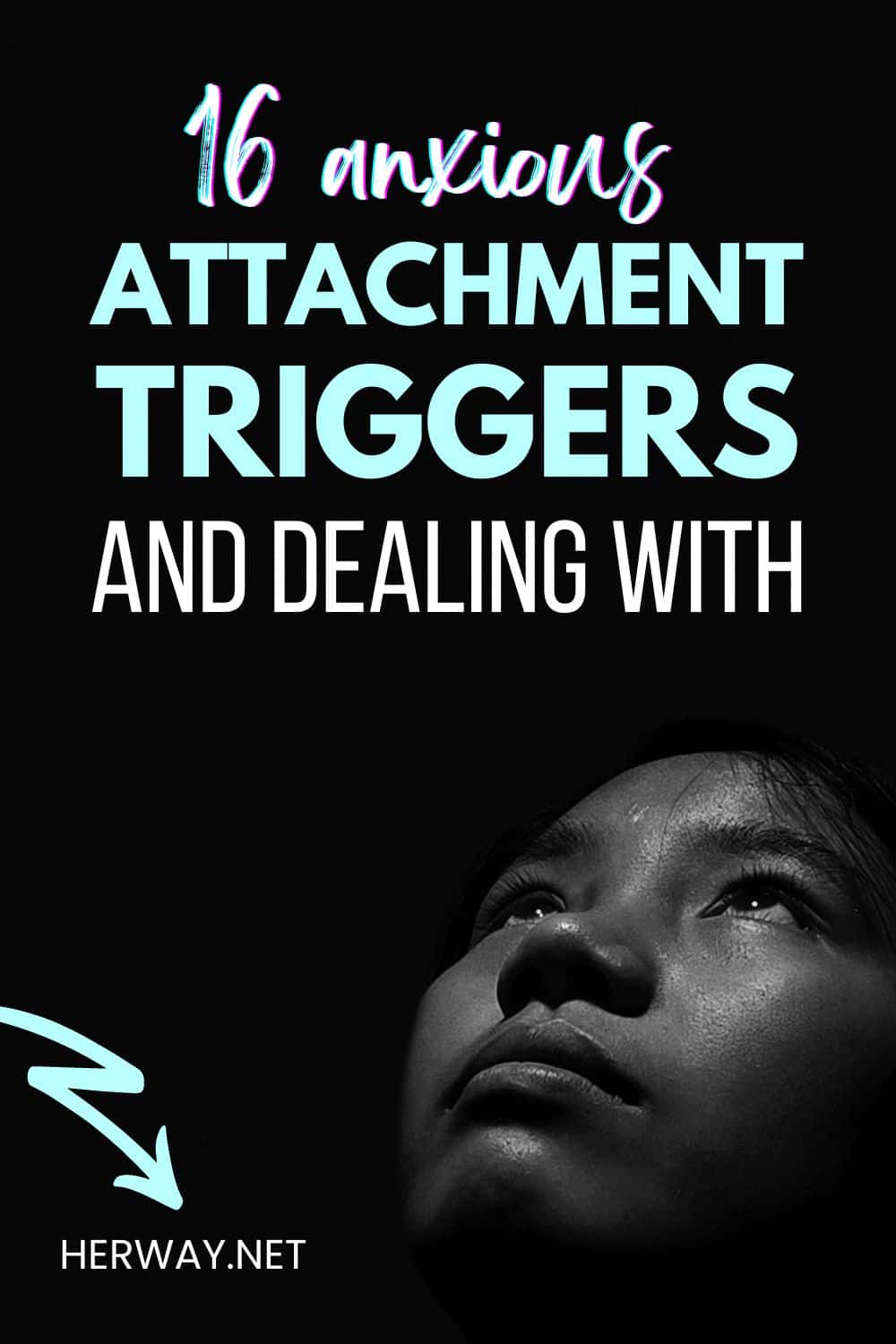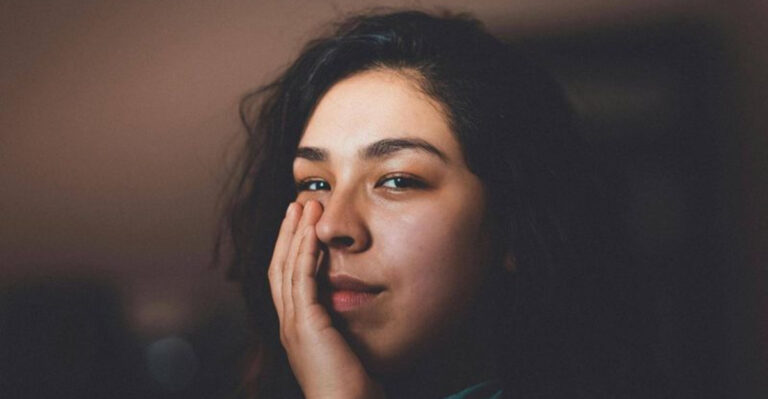16 Anxious Attachment Triggers And Dealing With Them
People with anxious attachment are often clingy, needy, and preoccupied with their partner’s availability. They may also be jealous and possessive. They may feel like they need to be in constant contact with their partner, even when their partner does not want to talk to them.
If you have a partner with this attachment style, or if you yourself suffer from this type of relationship bonding, you will want to know these anxious attachment triggers.
Therefore, stay tuned to learn more about attachment theory, how to deal with avoidant attachment, and what your triggers are. Regardless if you’re an anxious person or not, adult relationships need to be monitored.
What Are Anxious Attachment Triggers, And How Do They Affect You?

Simply put, attachment theory assesses how our relationship with our parents or primary caregivers impacts our adult relationships, most importantly, our romantic relationships.
According to this theory, we develop different attachment styles that are dependent on the availability and responsiveness of our caregivers when we are young.
When a parent responds inconsistently to their child’s needs, it can confuse and stress the child. This type of attachment results in anxious attachment styles.
This can make anxiously attached people clingy, and they often need to be close to the person they are attached to, even if that person does not want them around. This is explored in depth by John Bowlby.
There are many types of anxious attachment triggers. Anything that makes a person feel like they are being ignored or that they’re making their loved ones uncomfortable can be a trigger.
16 Examples Of Anxious Attachment Triggers
Next up are a few anxious attachment triggers and what they might look like in your intimate relationships:
1. Emotionally unavailable
Anxious attachment style is associated with a need for intimacy, dependency, and fear of abandonment. This attachment style can lead to emotional unavailability in relationships.
The anxious partner may often feel like they need more reassurance than the other person is willing or able to give them. This can lead to a cycle of anxiety and emotional unavailability in the relationship.
The person has a hard time trusting others and tends to cling to them. They are often very sensitive to criticism, and they have low self-esteem. They are also very dependent on the other person, and they may even feel they need to be taken care of by them.
2. Ignoring
Anxious people are more likely to be hyper-vigilant, which can lead to a lot of problems in relationships. They have a tendency to be clingy and needy, and they might always need reassurance that they are loved.
If you are in a relationship with someone who has an anxious attachment style, it is important that you do not ignore them. They cannot help their anxiety and will need your support to get through the day.
Your significant other’s nervous system is being regulated by their inner child, and when you ignore them, their hypersensitivity and sense of security skyrocket. This is due to their attachment anxiety, focusing on their parent’s needs, and, mostly, inconsistent parenting.
3. Anger
It is not uncommon for people to be angry when they feel insecure or threatened in some way. When we feel like our needs are not being met, we can become defensive and lash out in anger.
When people with an anxious attachment style are faced with these feelings, they are more likely to experience anxiety. This is because people with an anxious attachment style tend to worry about the person they are attached to.
They are more sensitive about the relationship than secure attachment style people. They also tend to be more sensitive about rejection and will worry that their partner will leave them if they say or do something wrong.
4. Silent treatment
The silent treatment is a form of emotional abuse. It is one of the most common forms of verbal abuse, and it often triggers anxiety in people with an anxious attachment style.
People who have an anxious attachment style often feel insecure about their partners’ feelings for them, concerned that their partner will leave them at any moment.
They also feel very nervous when they are not able to contact their partner or speak to them on a regular basis because they fear that something bad has happened or that their partner no longer cares about them.
5. Dismissiveness
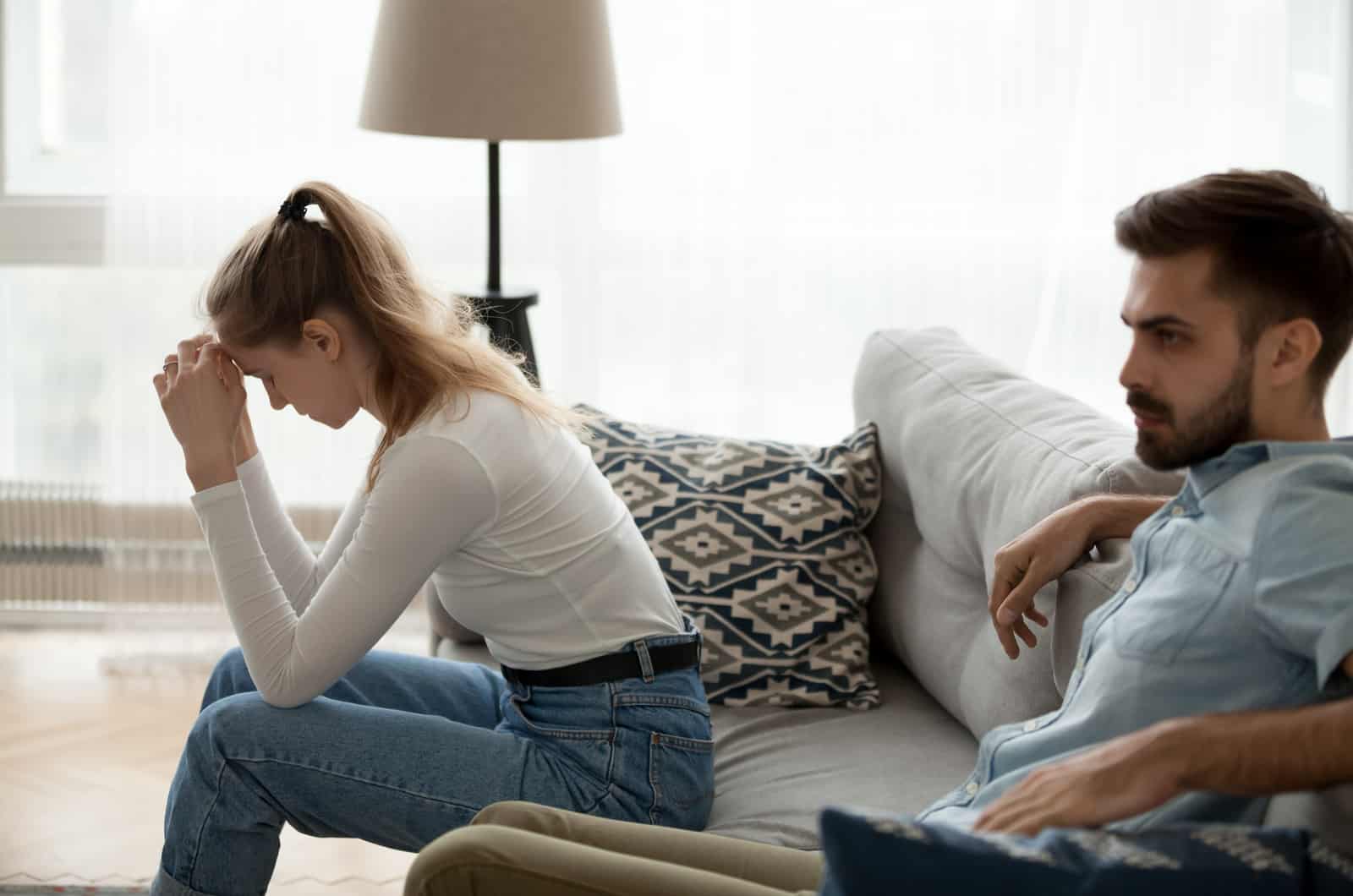
Anxious attachment style is characterized by the need for reassurance from others that they are loved, wanted, and cared about. A child with this type of attachment needs more attention from their parents because they have a fear of abandonment.
When you are dismissive towards an anxious person, they start to self-regulate and experience protest behaviors where their childhood experiences fuel their anxious preoccupied attachment style.
The dismissive parenting style is characterized by the parent’s tendency to reject and remove the child’s negative emotions. This is a trigger for anxious attachment and can lead to higher levels of anxiety in children.
6. On and off
On and off emotions are a trigger for anxious attachment style because it causes people to feel insecure about their relationship with their partner or even themselves.
Emotions are on and off with this type of attachment style. The person may experience feelings of sadness, anger, and/or anxiety when their partner is not with them, but they also feel joy, happiness, and reassurance when their partner returns.
Someone with the anxious attachment type doesn’t know what to do when their partner isn’t around because they don’t know how to feel about them.
7. Rejecting
People who have an anxious attachment style are typically very sensitive to rejection and abandonment.
In other words, they are more likely to feel hurt when someone rejects them or leaves them alone. They also worry about being rejected by others and may experience anxiety when they are not in close proximity to the person they are attached to.
This way, you are rejecting their self-worth, your partner’s needs, their fearful avoidant attachment, and all of their early attachment options. You would need to do couples therapy with your partner instead of posting your rejection on social media.
8. Too many expectations
Anxious attachment styles are often triggered by the fear of rejection. They believe that if they don’t get what they want, they will be abandoned or rejected. These people are usually not as confident in themselves and their abilities as others.
This dependency stems from an irrational fear that they will be rejected or abandoned by their loved ones, which leads them to constantly seek reassurance and approval from those they care for.
9. Emotions
Emotions play a major role in our lives. They can affect our mood, influence our actions, and even lead to anxiety.
We are all aware of the fact that emotions are triggered by different events and experiences in our lives, but not everyone is aware that there is a link between attachment styles and emotions.
Anxious attachment style refers to people who have difficulty trusting their partners or caregivers. They often feel insecure about whether their partner will leave them or not.
10. Preoccupations
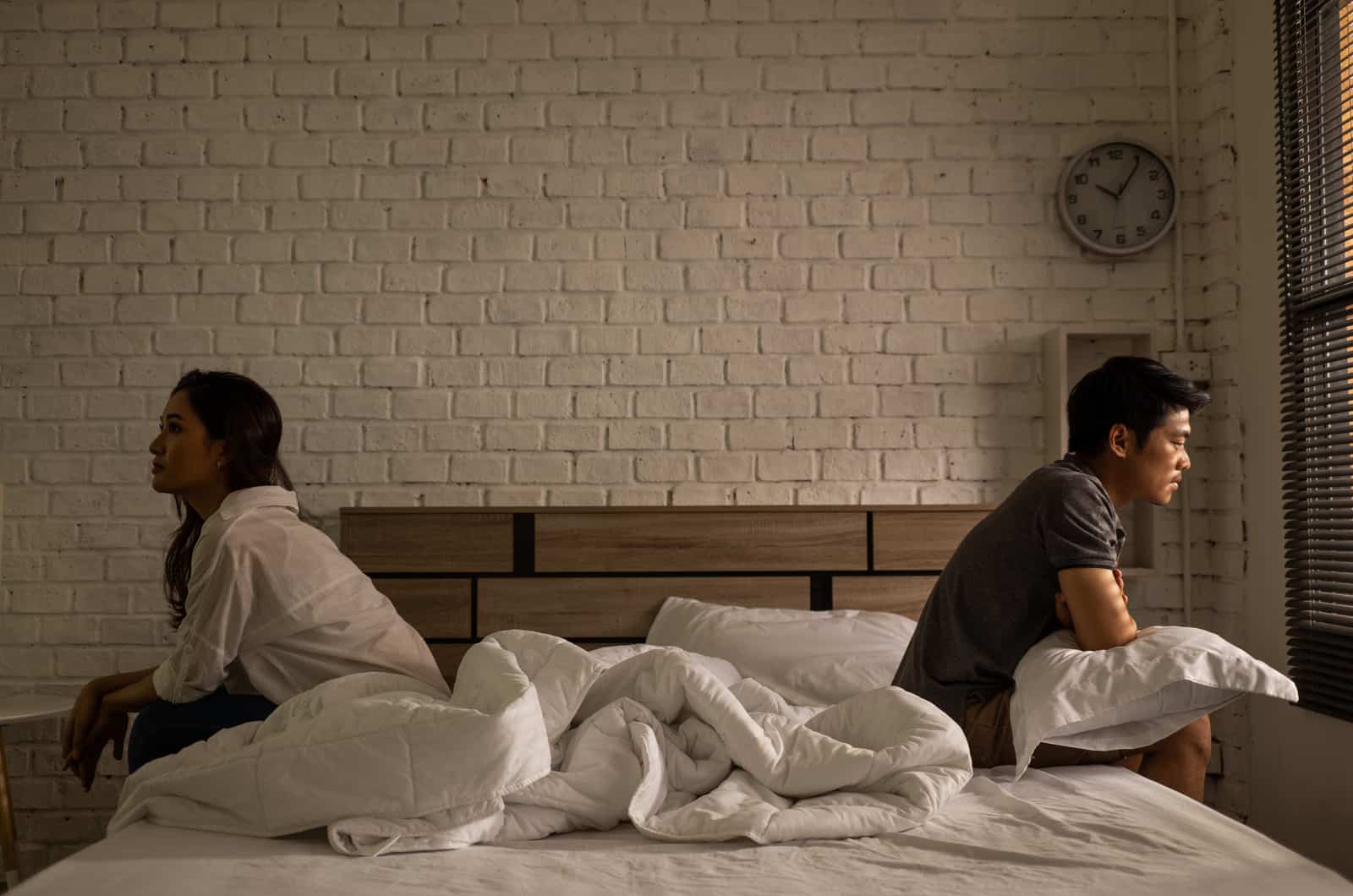
The anxious attachment has been defined as a long-term pattern of anxiety, worry, and fear of abandonment in close relationships.
Individuals with anxious attachment are preoccupied with their partner’s whereabouts and thoughts, and they are often fearful that their partner will not return or may be unfaithful.
They have difficulty trusting their partner and feel uneasy when they are apart. This is why one of the anxious attachment triggers is preoccupation, as these people want their partner’s undivided attention.
11. New people
An anxious attachment style is an insecure form of attachment where one fears rejection and abandonment.
The new people we meet can be a trigger for anxious attachment style because it makes us feel vulnerable and it brings out our insecurities. Their partner is preoccupied with a new person, not paying attention to them.
Someone with this type of attachment usually has a strong desire to be close to their partner, but they also have a strong fear that the person will leave them.
12. Being busy
Anxious attachment style is characterized by the need to be in constant contact with the person you are attached to. This behavior is driven by a fear of abandonment and separation.
The most common triggers for anxious attachment are being busy, feeling lonely, or not spending enough time together.
When these triggers are activated, we notice a distinct change in our relationships and the way that we treat others, often leading to conflict. Sometimes this conflict can lead to the break-up of a relationship, which can be distressing.
13. Ghosting
Ghosting is a form of rejection when one partner does not want to confront the other, and so they start to avoid the other person.
The problem with this is that it triggers a sense of insecurity in the other person and leads them to feel abandoned and rejected. This can lead to an anxious attachment style where they are constantly worried about being abandoned or rejected by their partner.
14. No contact
No contact is a trigger for an anxious attachment style because it causes feelings of anxiety and fear that the other person might not want to be in contact with them anymore.
A study has shown that people with insecure attachment styles (ambivalent and avoidant) are more likely to feel anxious after a period of no contact. This is because they are not sure if the other person is still interested in them or not.
15. Inconsistency
Inconsistency in a relationship is a key trigger for an anxious attachment style. People with anxious attachment styles are not only more sensitive to inconsistency, but they are also more likely to be inconsistent themselves.
The need for consistency is an innate human need that we all have. It’s what makes us feel safe and secure, and it’s what helps us trust others.
But when we don’t receive consistency in our relationships, it can be really difficult on our mental health, and this can lead to anxious attachment styles.
16. Indecisiveness
Indecisiveness is a type of behavior that can trigger an anxious attachment style in people who have it. The anxiety they feel is triggered by the fear that they will not be able to make decisions and have their needs met because they are indecisive.
These people have a tendency to worry and feel insecure about their partner’s feelings and commitment toward them.
They often think that they are not enough for their partners, and they have doubts about whether their partners love them as much as they love them.
Understanding and Dealing With The Anxious Attachment Style

Anxious attachment style is a type of attachment style that is characterized by a strong desire for intimacy and dependency. People with this attachment style are often preoccupied with their relationships and tend to worry about the availability of their partners.
Some people are more prone to anxiety than others, but it can also arise due to certain life events or situations. In the end, their caregivers, significant others, and romantic partners are those who feed their not-so-healthy ways and further deepen their self-soothing.
It’s important to remember that anxiety is not a personality trait or an illness; it’s just a natural human reaction to stressful situations.
People with an anxious attachment style are more likely to be clingy, jealous, and controlling in their relationships. They also have a tendency to worry about the future of the relationship and feel insecure in it.
They are often very clingy and have a fear of abandonment. They might also feel like they need to be in constant contact with their partner, which can lead to them checking up on them constantly.
It’s important to note that anxious attachment isn’t always unhealthy, as it can be a sign of someone who doesn’t want to lose their loved one. Still, these attachment patterns are not always healthy, especially since they are generally focused on negative thoughts.
Anxious vs. secure attachment style
Anxious attachment style is a psychological term that was first introduced in the 1980s. It refers to people who have a negative view of themselves and others. Anxious attachment is one of the insecure attachment styles.
They are afraid of being abandoned, and they don’t trust other people. Kids with this type of attachment will feel distressed and experience separation anxiety when they’re away from their caregiver.
People with this attachment style are often preoccupied with their relationships and tend to worry about the availability of their partner. They might also act in ways that make it seem like they’re not certain that they’ll be loved if they rely on others too much.
Secure attachment style, on the other hand, is when people have a positive view of themselves and others. They trust other people and are less likely to feel anxious about abandonment.
How Do You Break The Cycle Of Anxious Attachment?

One way to break the cycle is by practicing self-compassion. This means being kinder to yourself when things don’t go well and not blaming yourself for things going wrong.
It also means recognizing that everyone has their own difficulties and that it’s okay if your partner isn’t perfect or doesn’t make all your problems in your love life go away.
The cycle of anxious attachment is one of feelings and thoughts in which you become attached to someone, feel like you need them to be there for you, and then once they are there for you, you start to feel anxious about them leaving.
One of the most difficult things to do as a human being is to break the cycle of anxious attachment. There are many different methods that can be used to break this cycle, and it is important to find which one works best for you.
The first step is to be aware that you have a problem with anxious attachment. You need to understand the signs, behaviours, and symptoms of it as well as the triggers that make you feel this way. Once you know what your triggers are, then you can start to work on them one by one.
For example, if your trigger is being in a committed relationship, then you can work on it by going on dates with different people but not getting too serious about anyone for now.
How Can You Help Someone With Anxious Attachment?
It is important for people with an anxious attachment style to learn how to manage their emotions so that they don’t feel overwhelmed by them. It is also important for them to learn how to communicate their feelings in a healthy way, as well as how to ask for what they need from others.
The first step is to try to identify their attachment style. It’s hard to pinpoint which avoidant attachment style someone has until you see it in action. It could be a past traumatic romantic relationship, ignoring their emotional needs, or a current situation that they are struggling with.
The second step is to help them develop a sense of safety. This can be done by helping them find ways to feel safer in the present moment and work towards feeling safe in the future.
Third, teach them how to regulate their emotions and reduce anxiety through breathing exercises and other coping mechanisms.
This person never focuses on their own needs and needs constant reassurance that their anxious-avoidant adult attachment isn’t getting in the way of your relationship. It reminds them of their primary caregivers who could never offer a secure relationship.
What Are Some Things That Can Cause Anxious Attachment?
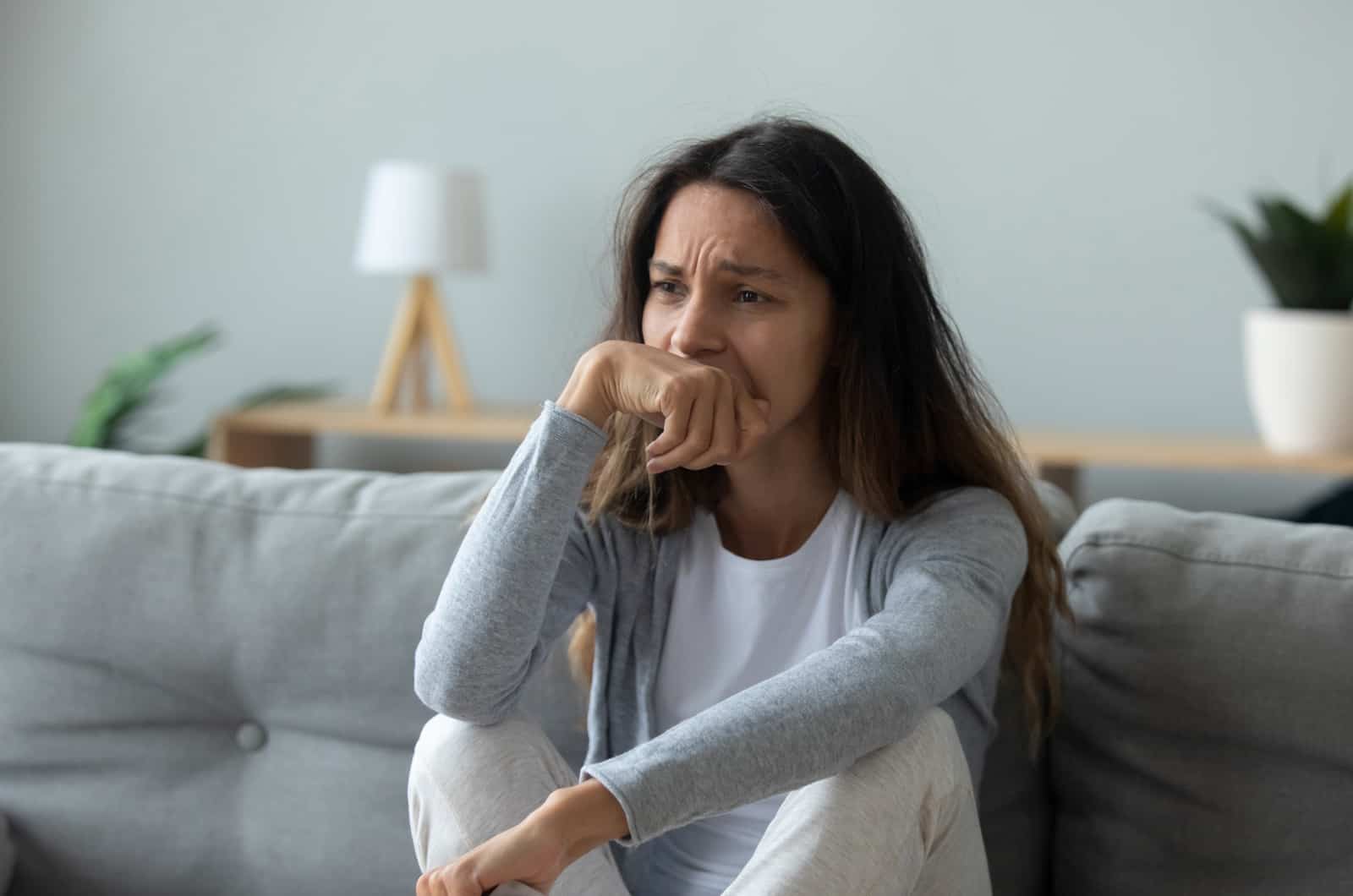
Anxious attachment can be caused by a number of things. One is when the parent or caregiver is neglectful, abusive, or inconsistent. Another is when the child has been separated from their parents for an extended period of time.
This type of attachment often results in a child who feels constantly worried and unsure about whether they’re loved and cared for.
This separation may be due to divorce, death, other family problems, etc., and it can result in a feeling that they are unloved and unworthy because they are not with their parents all the time.
Anxious attachment is a type of attachment that occurs when the child feels that they cannot rely on their caregiver to meet their needs. The child may worry about being abandoned and may not be able to rely on the caregiver for comfort.
Some things that can cause anxious attachment are:
• A parent who has unpredictable moods or who is abusive.
• Caregiver unable to provide adequate care for the child, such as food or shelter.
• A parent who does not seem interested in spending time with the child.
• An unreliable caregiver, such as one who leaves without warning or one who cannot be contacted when needed.
Understand Your Attachment Style
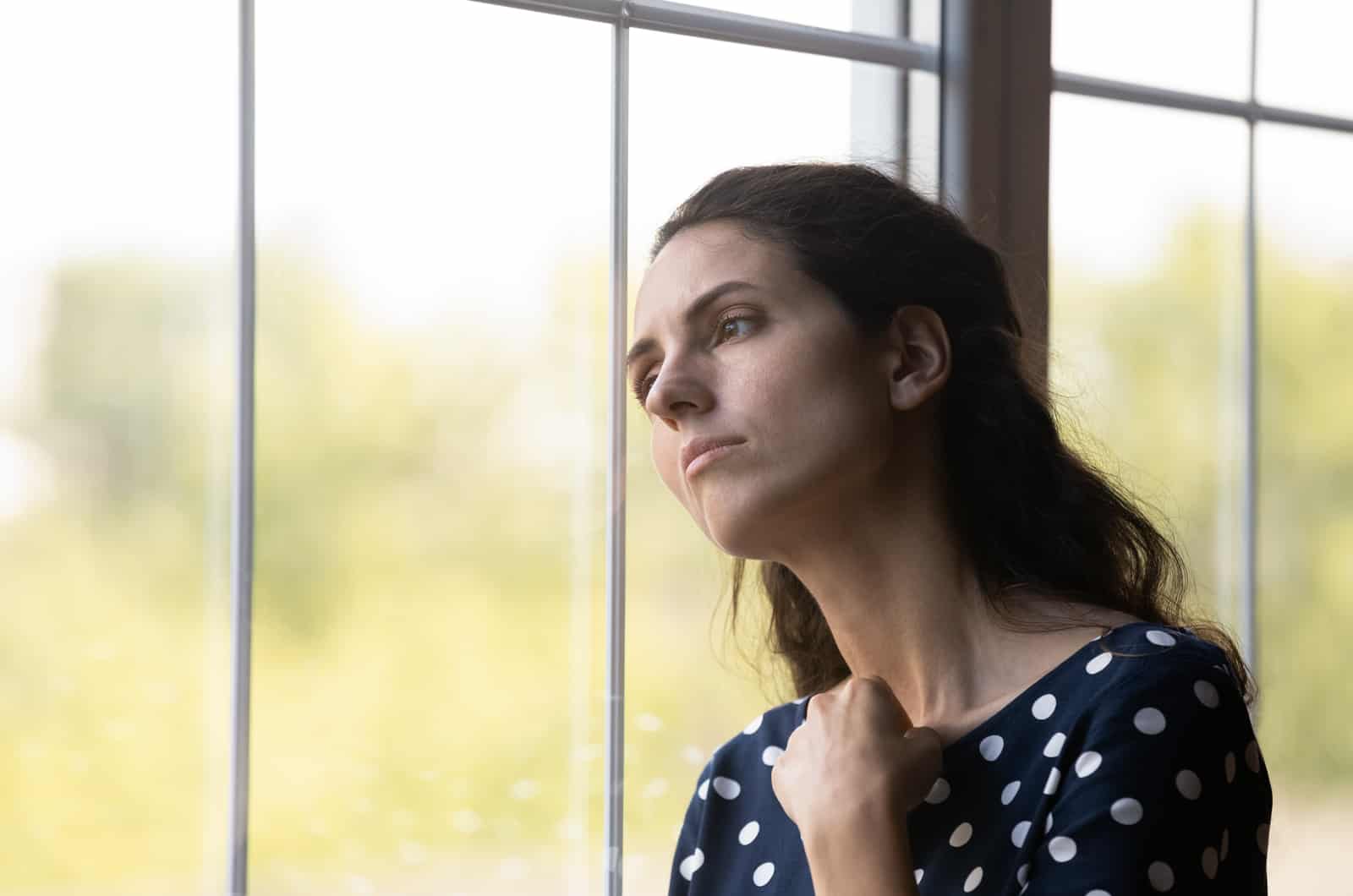
The anxious attachment is a type of attachment that is characterized by a fear of rejection and abandonment. It is often seen in people who have experienced neglectful or abusive childhoods.
They have problems forming healthy relationships and look for validation in places that are not good for their mental health.
I hope this article helped you understand and grasp anxious attachment triggers. Also, I hope you won’t try to avoid it but instead address your fear of abandonment.
